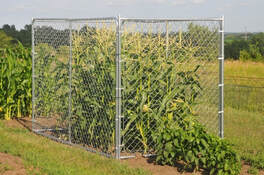
– Two or more wires must be used. Place the first about 5 inches above the ground and the second 4 inches above the first (or 9 inches above ground). Raccoons must not be able to crawl under, go between or go over the wires without being shocked.
– Fence posts used for electric fences work well for this application (go figure), as do the insulators used to support the electric wire.
– It is much easier to use the woven electric wire with strands of wire embedded than to use a solid metal wire. The woven wire is easier to bend around corners and to roll up when done for the year.
– Though both the plug-in and battery operated fencers work, the battery operated types allow more versatility in where corn is grown. One set of batteries is usually sufficient for the season. In my case, I pull the battery out of an old tractor that is not used often. It will also last the season if fully charged at the beginning. My fencer is probably on for a total of a month.
– Start the charger before the corn is close to being ripe. Once raccoons get a taste of the corn, they are more difficult to discourage.
– Control weeds near the wire. Weeds can intercept the voltage if they touch a wire and allow
raccoons entry beyond the weed.
– Check the wire occasionally to make sure you have current. This can be done easily (but unpleasantly) by touching the wire. There are also tools that will measure the voltage available for sale. They are worth the money.
As mentioned earlier, kennel fencing can also be used. Make sure that the panels are tied together
well enough that raccoons can’t squeeze through corners. (Ward Upham)
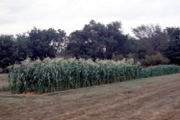
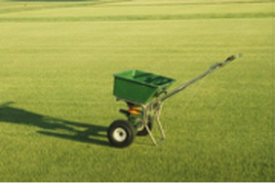
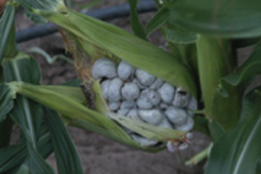
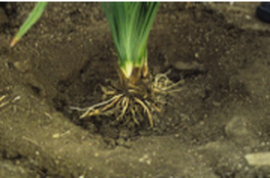
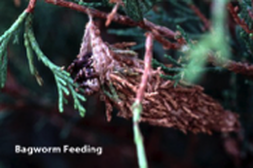
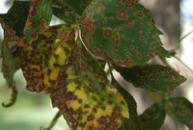
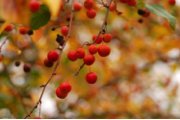
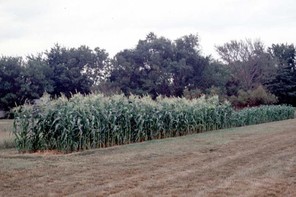
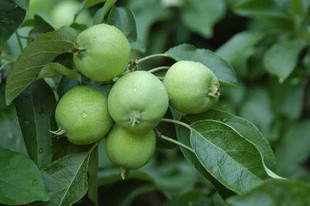
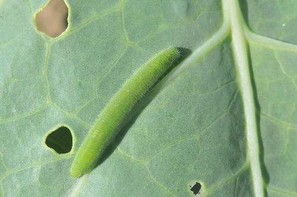
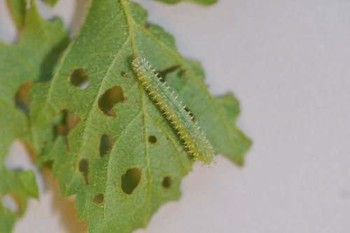
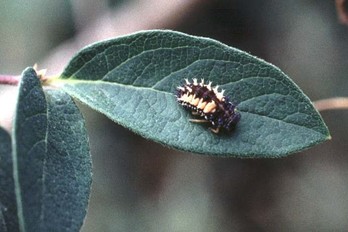
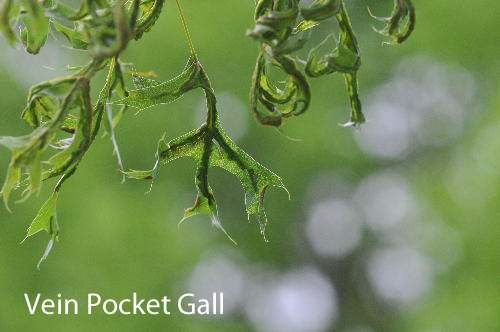
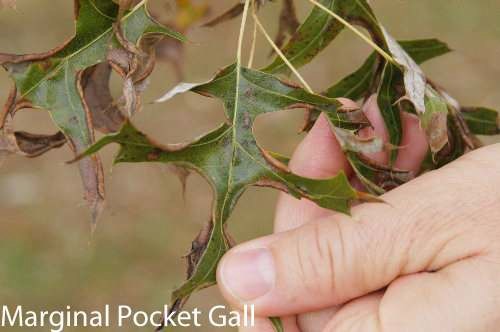
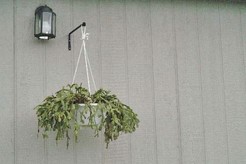
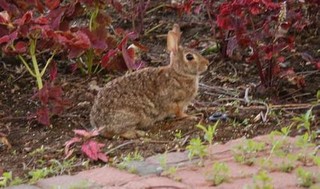
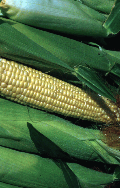
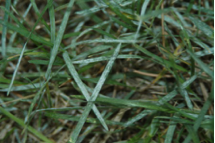
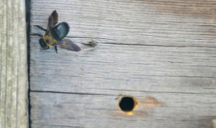
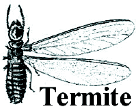

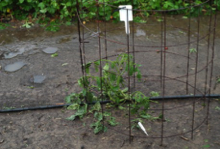
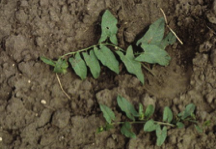
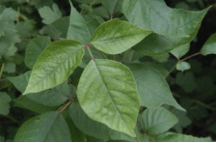
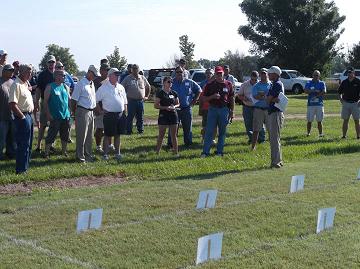
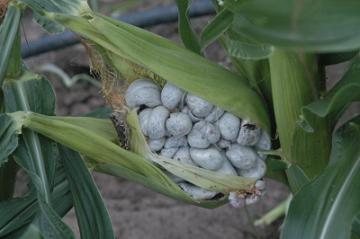
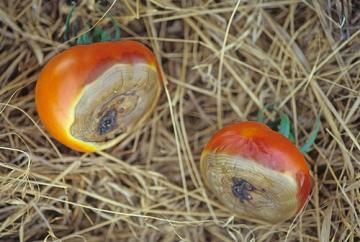
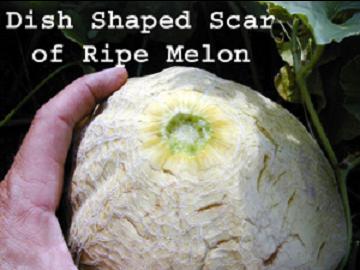
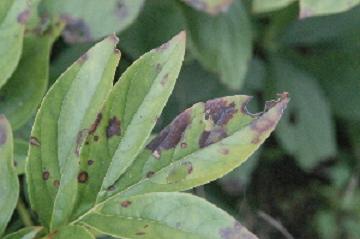
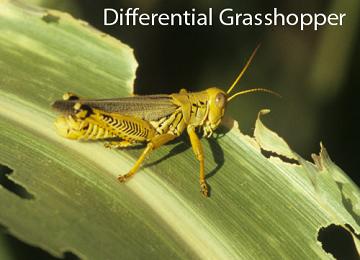
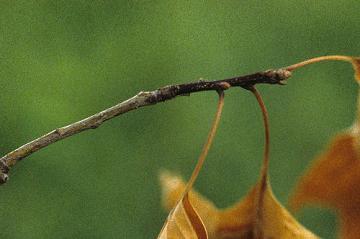
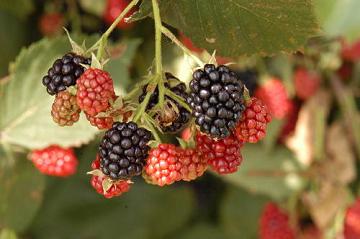
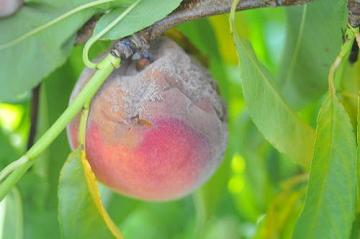
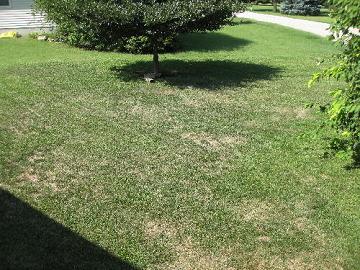
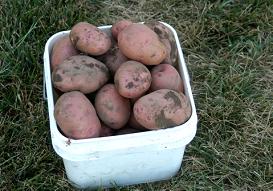
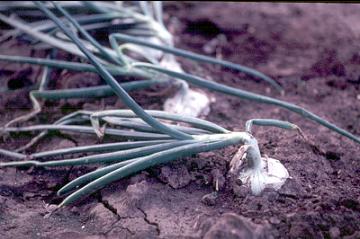
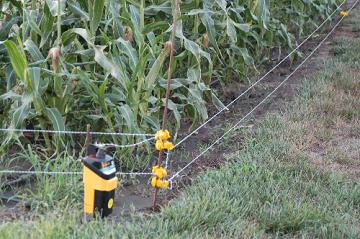
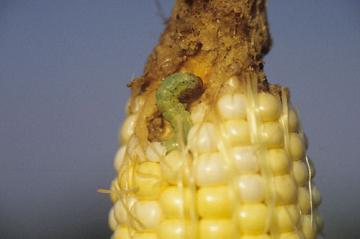
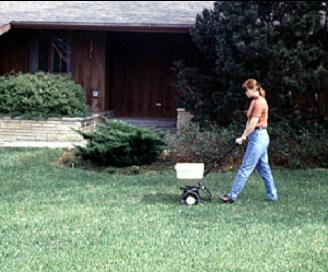
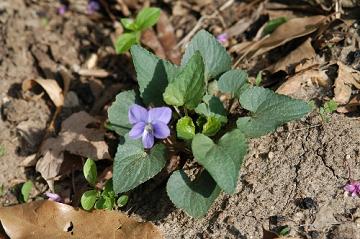
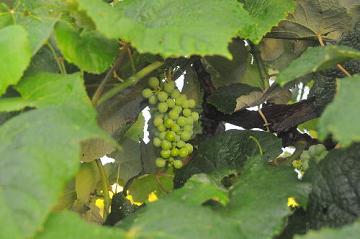
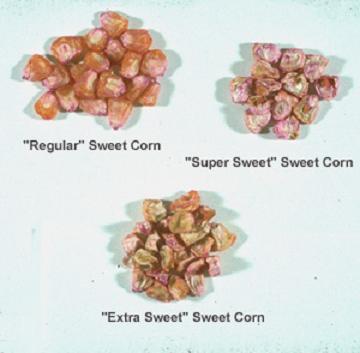
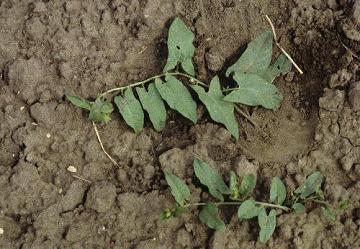
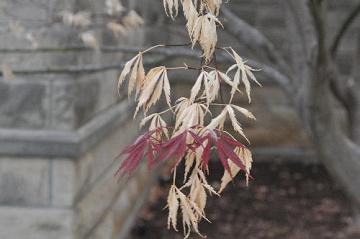
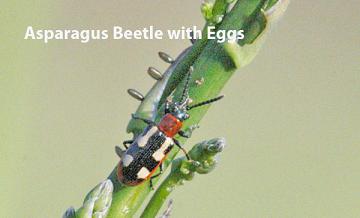
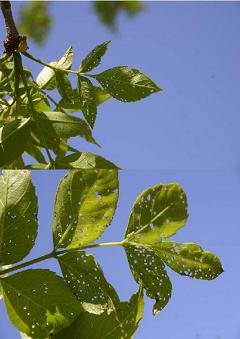
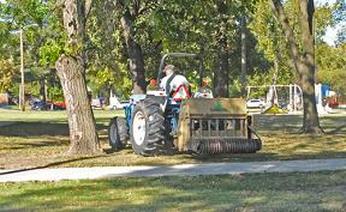
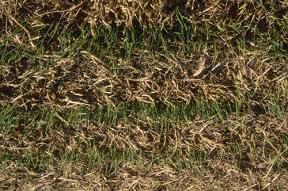
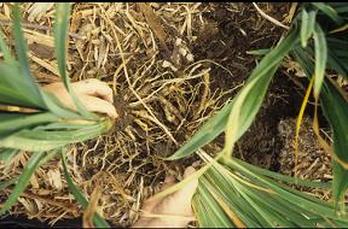
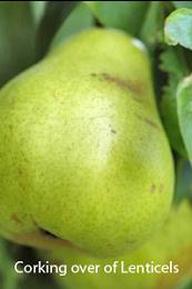
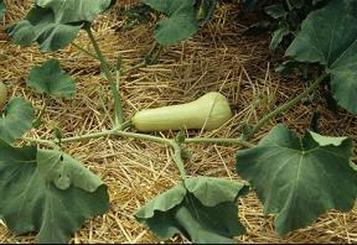
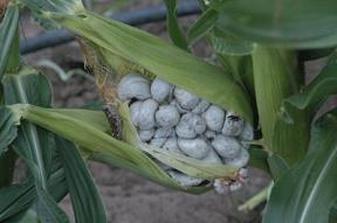
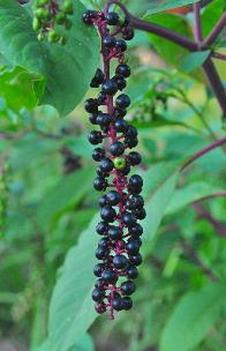
 RSS Feed
RSS Feed
